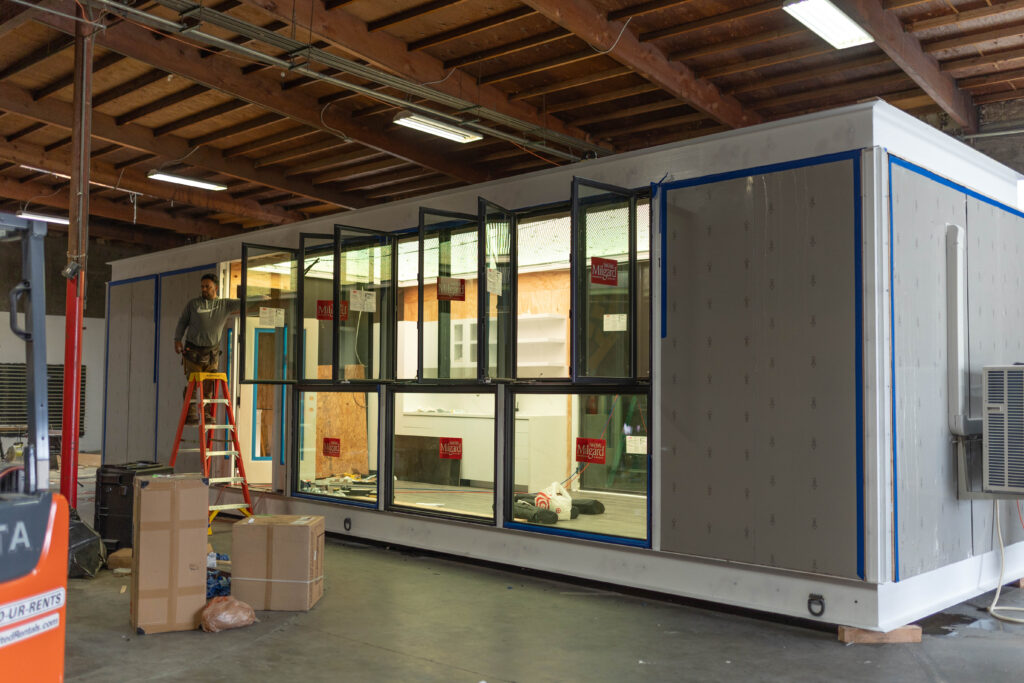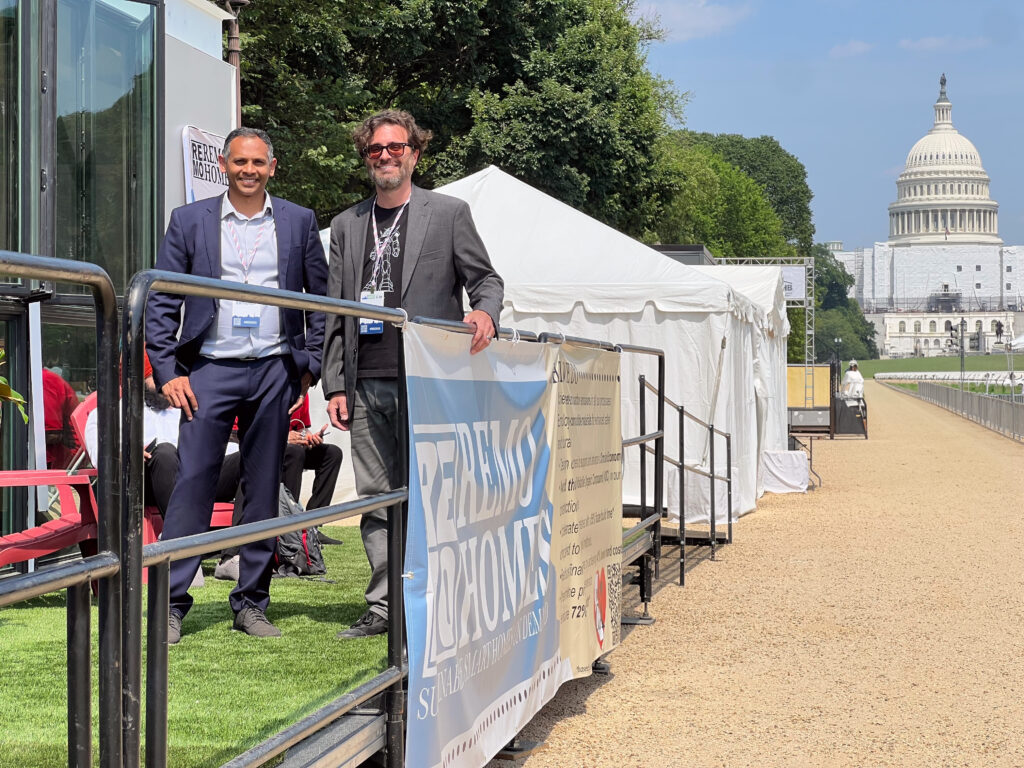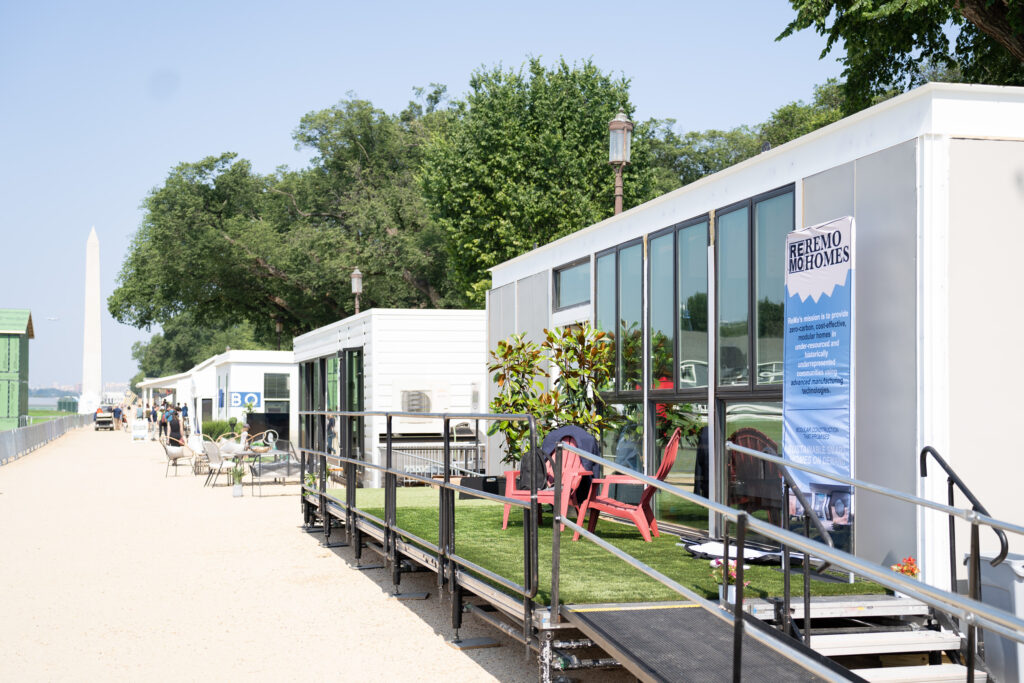
ReMo Homes is On a Mission to Build Modular, Net-Zero Operational Dwellings
2024 Code Council Annual Conference, Expo and Committee Action Hearings attendees can partake in a building tour to ReMo Homes, which designs and manufactures modular, net-zero operational dwellings.
The American Dream is often associated with home ownership, but rising prices and limited supply continue to keep this dream out of reach for many consumers. ReMo Homes, a minority- and disabled veteran-owned design and manufacturing company, intends to change that with modular homes that are built to be net-zero operationally from day one.
“The cost to make a net-zero home after the fact is much higher,” said Ryan Blowers, Co-Founder and Head of Manufacturing of ReMo Homes. “A lot of that cost is in soft costs. You’re paying for installation and all these other things. We can alleviate that by doing built-in photovoltaics and battery storage right from the shop. When we build a house, solar panels are going to be just another part of the installation process in the factory.”
ReMo Homes’ prototype factory is among the building tours scheduled to take place this October at the 2024 International Code Council Annual Conference, Expo and Committee Action Hearings (October 20-31). It will be part of the Code Council’s Off-Site Construction Experience which features an exhibit at the expo with industry professionals showcasing the latest products, an insight session on emerging building safety topics, a panel discussion on the challenges and opportunities of off-site construction and a specialized training session.
Attendees who sign up for the tour will walk through a prototype home that will help shape future dwellings when ReMo goes into production. The company is currently working on a new, factory-only prototype with two modules: one that will be built using standard modular construction methods, and another with infill wall panels, vertical supports and connections from a leading manufacturer of automotive fasteners.
“This way, we can get a side-by-side comparison of how these two processes are going to work and take what we like from one and hybrid into the other one,” said Blowers. “Based on what we learn from this in-house prototype, we will build two others, and they will both be deployed in California, in different climate zones, so we can get the real-world use out of the unit. People will be staying in them, we’ll have an actual certificate of occupancy, so we can learn as much as possible and incorporate that into our production line.”
While no production date has been set, ReMo Homes hopes to start mass-producing homes in two years.

The Path to Affordable Housing Starts With Modular Construction
Blowers, a U.S. Navy veteran, first thought about modular construction on his commute to SpaceX, where he worked as a project leader. He saw numerous unhoused Americans every day and wanted to find a way to help ease the housing crisis. He met his co-founder, Vamsi Kumar Kotla, shortly after leaving SpaceX and the two quickly hit it off.
“He asked me how I felt about modular construction,” said Blowers. “I lived in Atlanta for about five and a half years, flipped a bunch of houses, built one from the ground up, and I was familiar with the construction process.”
The two budding entrepreneurs discussed how they could innovate technology and better assemble units instead of fabricating the whole thing. They founded ReMo Homes in 2022 and have since formed two important partnerships.
The first is with a fastener company that’s famous for eliminating visible screws from automobiles and for eliminating screws altogether from airbags, which became dangerous projectiles upon deployment. ReMo Homes has also formed an R&D partnership with a global leader in energy efficiency technology to experiment with the company’s energy management systems.
“They have some really cool stuff I’m trying to get over here,” said Blowers. “They make photovoltaic glass, which isn’t going to be so impactful on a single-story flat building. But on multi-story and multi-family homes, it could be a game-changer for solar collection.”

From Aerospace to Modular Homebuilding
You might not think that homebuilding has anything to do with aircrafts or spacecrafts, but ReMo Homes has learned a lot from the aerospace industry.
“We’re focusing on the construction method,” said Blowers. “Every home we’re building and have built thus far has a full configuration management system, just like an aircraft. Every single part of the home is accounted for – we know where it came from and it’s all listed in an index, sort of like a bill of materials. We’re also trying to minimize the variance in the building materials, so instead of using 15 different sized screws, you find one common fastener that can take the spot of 10 of those things.”
ReMo Homes is also looking at how standardization can improve efficiency and reduce their expenses. For example, the company’s last prototype was made with equal 62-inch openings. Panels were then inserted into that opening to create a solid wall, wall with a window, wall with a transom window, a full-size window and a door. This allows for flexibility while providing consistency within the building process.
All of these things contribute to ReMo Homes’ goal to build affordable dwellings. The company is currently operating under a California Energy Commission contract for Energy Innovations in Modular homes. Though ReMo Homes is still in the prototype phase, Blowers hopes that consumers will ultimately pay less than $200 per square foot, or roughly $300,000 for a 1,500 square foot home. With the net-zero features factored into that cost, including solar panels and heat pumps, Blowers think that ReMo Homes will be very competitive with comparable offerings.
“Our costs for all that would probably be around $20,000, but if you do it after the home has been built, you’re probably talking $50,000 to $60,000,” said Blowers. “I think by installing it at the factory we’ll be competitive with other net-zero operational homes.”
Kotla added that to address California’s home insurance crisis, “We decided to add resiliency features to our net-zero home.”
“This is through a Class A rated envelope to address issues related to fire and other climate hazards, which are becoming increasingly common in much of the country,” said Kotla.

Everyone is Welcome
Blowers is excited about the building tour taking place at the Code Council’s annual conference. He also welcomed others to his factory, including competitors.
“We have a lot of the technology that we will be putting into the homes on hand to show people,” he said. “I feel like the modular space is so small, even though people might think they’ll become competition, everyone is on the same team, and it’s modular versus traditional methods of construction. I’m more than willing to share whatever information I can about my passions on modular and how I feel innovations in the assembly process could help. It only makes everybody better.”
To learn more and register for the building tour, click here.








